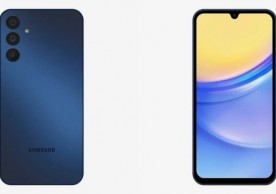HDMI vs. DisplayPort: Which Display Interface Reigns Supreme?
HDMI vs. DisplayPort: Which Display Interface Reigns Supreme?
Staff ReporterDisplayPort and HDMI, both are distinct standards to transmit audio and video from the player to display. However, what is - besides clearly distinct connectors -difference between HDMI and DisplayPort? After all both were made to do the similar thing, right? Here in this post, I will try to give some advice on the same.

There are many examples in the technology history of the multiple competing standards, which were in the market at the same time. Just think of video recorder standards war of 1980s between the Video 2000, Betamax and VHS. For youngsters amongst us, finally VHS won primarily because of the lower cost as well as support by adult movie industry. Quite recently, there was this battle between HD DVD and Blu-ray.
Thus, is there the format war between HDMI and DisplayPort going on? Not exactly. Whereas both DisplayPort and HDMI have got the similar goal (that is sending the high-definition video & audio from the source device to display), and they were actually conceived under various constellations.
HDMI was introduced in the year 2003 by consortium of display manufacturers, which includes Philips, Sony, Toshiba, and Panasonic. These are the large corporations that mainly target purely the image-driven apps. For this reason, HDMI is a standard you commonly find on the appliances such as TV sets, home computers and projectors.
Some years later, another big consortium of chip and PC manufacturers worked on creating DisplayPort, follow-up of older VGA & DVI standards. Main focus was the computer displays as well as professional IT equipment, thus more data-centered marketplace.
DisplayPorts vs. HDMI - Connectors
These 19 pins of HDMI-connectors actually are available in five different shapes, but just three of them are seen: popular Type A (i.e. standard HDMI used for projectors, laptops and TVs), Type C (i.e. mini HDMI, found on a few laptops and tablets), and last Type D (i.e. micro HDMI, for the tablets or smartphones).
Lesser popular Type B (comes with 29 pins) can be used for the dual-link apps, while Type E has the locking tab that will keep this cable to vibrate loose in the automotive applications. Other HDMI connectors use friction for keeping this plug in the socket - even though at times locking mechanisms can be used, which prevent cable to pull loose. These mechanisms are quite common in the best DisplayPort cable solutions.
The DisplayPort connectors have got 20 pins and there are 2 sizes available: standard DisplayPort and the smaller alternative that is made by Apple named as Mini DisplayPort. Latter is a same port like Thunderbolt.
Although most of the full-size of DisplayPort connectors have got the locking mechanism, which prevents this from getting disconnected accidentally, the feature isn't needed by official specification.
DisplayPort Vs HDMI: Bandwidth and Resolution
Today's highly common version, the DisplayPort 1.2, will support the video resolutions of 3840x2160 pixels, at the refresh rate of 60Hz. Its official name for the resolution is by way UHD, however, term 4K is used quite often (though in movie industry it implies resolution of 4096x2160). This supports 3D video formats and maximum bandwidth sent through the DP 1.2 cable will be 17.28 Gbps. Quite often used HDMI-version of Full HD visualization tool (that is version 1.4) generally supports the similar resolution as DP1.2, but just at 30Hz. Maximum bandwidth for the HDMI 1.4 is of 10.2 Gbps.
It is important to look on version number than compare HDMI with DisplayPort.
The true 4K-equipment normally uses newer HDMI 2 version that features the UHD resolution of 60Hz and bandwidth of 14.4Gbps. Thus, it is very important to look on the version number than to compare the DisplayPort with HDMI port.
In the mean time, HDMI 2.1 is launched too, supporting 4K in 120Hz or 8K in 60Hz. These are same resolutions for latest DisplayPort 1.4. Bandwidth of the DP 1.4 tops on the dazzling 32.4 Gbps.
DisplayPort vs HDMI: Audio features
Both DisplayPort and HDMI support over eight digital audio channels up to 24bit and 192 kHz. Main difference is HDMI features the audio return channel. It means that not just this source device (generally the AV-receiver) will send the audio to TV set, but sound will flow in other direction too. This will be used when TV has the built-in receiver (watching Netflix over the smart-TV), however, you do not want to listen on the sound by using TV's built-in speakers or prefer surround sound system for AV-receiver. Even though it is the valuable use in the consumer electronics, it's almost not used in the professional AV visualization.
DisplayPort vs HDMI: Cable length
There are different standards of the HDMI cables accessible in the market, however, typical cable available is under "High Speed" certification. Unluckily, as it is often a case with the low-cost appliances, not every high speed cables will actually deliver right quality. The poor cables will cause plenty of problems, like glitches and artifacts.
HDMI standard does not actually define the maximum cable length. This rather describes the performance specification by which cable length will be derived. Generally the best HDMI cable is short. Just rarely display and source are over 2 mtrs apart in the television or projector setups. For the longer distances, you may rely on the signal booster or active cable that amplifies signal. Note HDMI signals will run over the CAT 5 or 6 cables (over 50 meters), the coaxial cable (over 90 meters) and over fiber (over 100 meters).
The passive copper best DisplayPort cable transmits high data rates over 4k resolution on 2 meters. Suppose you want to cover the distance of over 15 meters, you're limited to the 1080p resolution as per the specification - though several tests show higher resolutions are quite possible. The active DP copper cable will cover over 20 meters, with 2560 x 1600 resolution. For the DisplayPort, the fiber cables will cover the longer distances. And contrary to the HDMI, DP will not carry the Ethernet signals, and nor it has audio return signal. But, DisplayPort supports a lot of adapters, for connecting the large number of the display standards, which includes VGA and single-link DVI and HDMI.
One more important feature of the DisplayPorts, is it will drive many monitors at one time. In such way, single DisplayPort interface will drive over 4 monitors at 1920 x 1200 resolutions. It is particularly important for the professionals who run the video wall, since they just require one cable between controller and video wall for driving 4 (6) displays.
Conclusion
Even though the main purpose of the HDMI and the DisplayPort is quite similar for around 90%, there are many distinct features. The HDMI supports Audio Return Channel, and making it highly possible to send the sound from display to source - that will be handy while using the smart-TV.
Possibility to drive the multiple displays with just one cable for many professionals is must. The feature determines in a lot of cases the best choice for the DisplayPort. In the terms of the image quality, there's virtually not any difference between the HDMI and the DP. Newer the version, higher will be the maximum bandwidth as well as supported resolution. It's actually very important to check out version than standard (DP or HDMI) itself. Also ensure that cable is very good enough for supporting version's resolution as well as high bandwidth.
most read
more stories from Reviews
-
Pixel 7a vs Pixel 8a: Why Last Year's Model Is the Better Deal
Discover why the Pixel 7a outperforms the new Pixel 8a in this detailed comparison. Learn about the advantages in affordability, color options, and feature parity. Read now to make an informed choice!
ernest hamilton -
5 Innovative Educational Mobile Apps to Make Learning Fun
Discover 5 of the most downloaded and popular mobile apps that streamlines learning and make studying fun. Download now!
ernest hamilton -
Top 5 Sports Streaming Apps for iOS & Android: The Ultimate Guide for Sports Enthusiasts
Stay ahead in the game with the top 5 sports streaming apps for iOS & Android. Don't miss out on the action, download now!
ernest hamilton -
7 Best Reading Tablets: Your Ultimate Guide to Choosing the Perfect Device for Your Books
Looking for the perfect reading tablet? Explore our guide to discover the top 7 options for your reading needs.
ernest hamilton -
Motorola Moto G Power 5G vs Samsung Galaxy A15: Best Budget Phones Under $200
Discover the best budget phones under $200: Motorola Moto G Power 5G vs Samsung Galaxy A15.
ernest hamilton -
6 Best Privacy-Focused Smartphones: Secure Options for the Privacy-Conscious User
Discover the top 6 privacy-focused smartphones for your security. Stay protected and browse with confidence!
ernest hamilton -
5 Best Smartphones for Business Professionals
Explore the top 5 smartphones tailored for business professionals. Stay ahead in your field with the right tech companion!
ernest hamilton -
iPhone SE (2022) vs iPhone 11: Making the Right Choice for Your Needs
iPhone SE (2022) vs iPhone 11: Find your perfect match now! Compare and choose the best iPhone for your needs.
ernest hamilton











